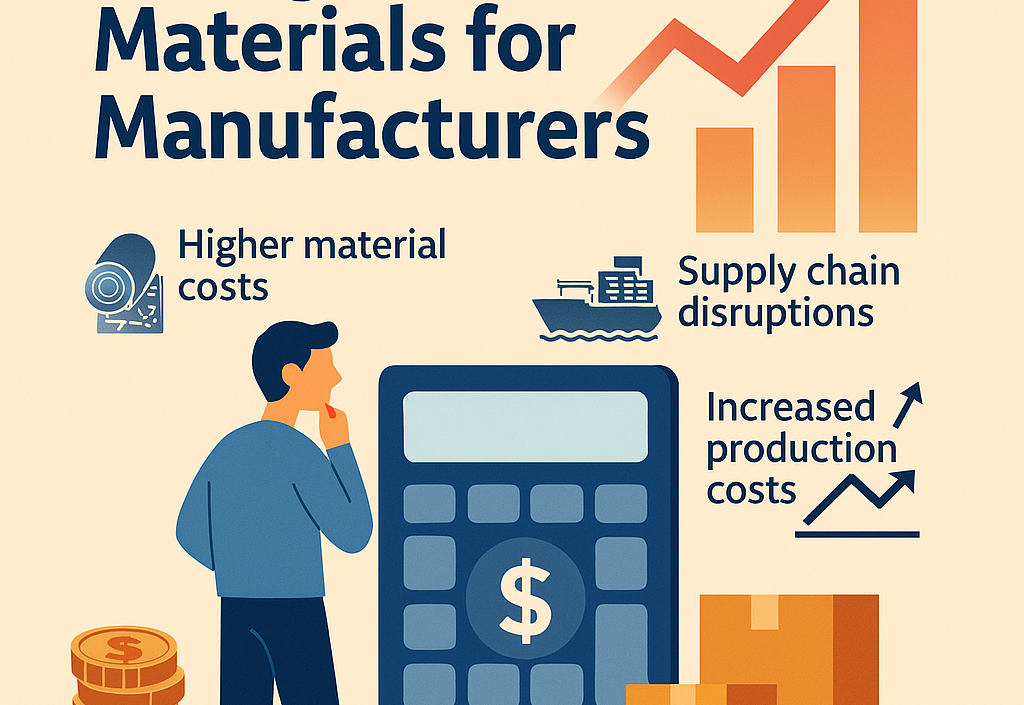US Tariffs and the rising cost of materials for manufacturers
Tariffs on imported raw materials—especially steel, aluminum, and electronic components—have significantly impacted manufacturing costs for many New England manufacturers. Impacts include:
• Higher material costs: Price increases in metals and components force businesses to either absorb higher costs or pass them along to customers, potentially affecting competitiveness. FINANCE AND MARKETING DEPARTMENT GET TO ESTIMATE NEW PRICING IMPACT TO CUSTOMERS.
• Supply chain disruptions: Many businesses that previously relied on international suppliers must reconsider domestic sourcing, which may not be as cost-effective. FINANCE DEPARTMENT AND PROCURMENT DEPT GET TO DO THE NEW SOURCING AND CONDUCT QUICK PRICING COMPARISON
• Increased production costs: With raw materials costing more, the overall cost of goods sold increases, tightening profit margins. FINANCE DEPT GET TO ESTIMATE THE COSTING IMPACT ANALYSIS
What manufacturers can do now to be ready for tariffs
For CFOs, controllers, cost accountants, and business owners, it is imperative to assess how these tariffs affect cost margins and whether existing standard costs remain valid. Key considerations include:
• Reassessing bill of materials pricing: Companies should review and update material costs in their enterprise resource planning (ERP) systems to reflect current market prices.
• Revising standard costs: Many manufacturers set cost standards based on historical pricing. With tariffs inflating costs, businesses should update these figures to avoid inaccurate pricing models and profitability projections.
• Scenario planning for future tariffs: The tariff landscape remains uncertain. Running cost simulations under different tariff conditions can help businesses prepare for potential future changes.
• Vendor and supply chain analysis: Evaluating domestic versus international sourcing and considering supplier renegotiations could mitigate tariff impacts.
How Digitalization can help ?
Navigating the complexities of tariff-induced cost increases requires a strategic approach. At new digital operation system , it assists manufacturers with:
• Costing analysis and standard updates: We help businesses reassess standard costs and implement updated costing models to maintain accuracy in financial reporting.
• Profit margin impact assessments: The new system can analyze the direct and indirect effects of tariffs on your bottom line, identifying opportunities for cost recovery.
• Budgeting and forecasting support: New digital system in financial planning ensures your business remains resilient despite tariff fluctuations.
The Trump’s tariff landscape keep changing and so are you . You must remain proactive.
Please leave your comment for the next topics.
 11Apr
11Apr






